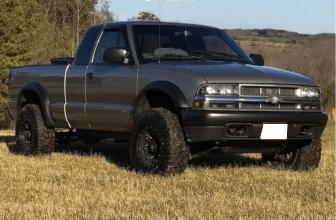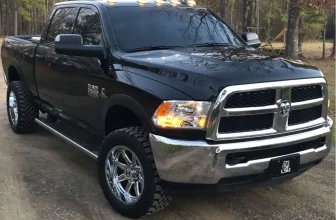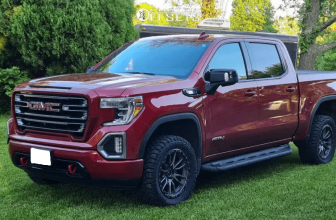Almost every truck or SUV owner has ever thought about switching to bigger tires. Usually, the decision of such change is caused either to increase the vehicle’s performance for some off-road challenge or just from the aesthetic side to make a truck or SUV more attractive and aggressive at the same time.
Then the main question arises: what is the biggest tire for a 15 inch rim?
Well, if you want to feel confident and calm whatever the situation, a 33 inch tire is the best option. Of course, you can put even a 35 inch tire, but it is quite risky and unpredictable, so it is recommended to stick to a 33 inch tire for 15 inch rim.
If it’s possible, try to contact your vehicle manufacturer to make sure about the largest tire that can be put on your rim safely.
What is the biggest tire you can put on a 15 inch wheel?
A 33-inch tall tire is the largest that can be put on a 15-inch rim without risk.
The 265/75/R15 are the best tire parameters if you want to change your regular tires to bigger ones without any additional modifications and if you want a tire to fit perfectly without rubbing.
Can you put 33 inch tires on 15 inch rims?
Yes, you can. The 33 inch tires in this case will fit 15 inch rims. A terrific combination of 33-inch tires on 15-inch rims gives your vehicle the flexibility and control it needs for offroading.
What size is a 33 inch tire on a 15 inch rim?
To find out a tire size that is similar to 33, you have to take into account such detail as the tire width, sidewall height, aspect ratio and the size of the rims. Well, there is no certain size of a 33 inch tire on a 15 inch rim, but here is a special table with maximum allowed parameters.
| 15″ | 33X950-15 | 33X10.50-15 | 33X11.50-15 | 33X12.50-15M | 33X13.50-15 | 33X15.50-15 |
How wide can you go on 15 inch rims?
If you want to know the maximum tire width that fits 15 inch rims, you can use a special table to assist you with.
Why Get Bigger Tires?
Many light duty truck and SUVs drivers change their stock tires to bigger ones. Every vehicle owner has own reasons for such replacement, but usually, there are two main of them:
First, is the vehicle`s new look with bigger tires. The truck obtains a more aggressive and muscular appearance due to the higher tire sidewall.
Second, the practical side. The vehicle becomes more lifted which adds clearance and improves performance for passing through ways which before were unreachable.
In most cases to install bigger tires on a certain truck or SUV you may need to buy an additional suspension or body lift kit (sometimes you have to afford both), to adjust your vehicle for new wheel size and make it behavior on the move safe.
Pros of Bigger Tires
In some cases bigger tires can give you several advantages which will be listed below.
Better Clearance
Installing bigger tires is one of the simplest ways to increase your vehicle’s height.Thanks to the increased clearance of the car, you can be sure that the bottom of the car will not suffer from stones, branches or other objects on the road.
Unique Appearance
By installing larger tires, your vehicle not only gets more ground clearance, but also acquires a unique appearance. The vehicle looks more muscular and aggressive, hinting at increased cross-country ability, and also attracts the attention of both drivers of other cars and pedestrians on the streets.
Off-road Appeal
One of the undoubtful pros of bigger tires is the much clearance it gives for the vehicle, which increases passability, especially in off-road areas where there could be climbs and descents from surfaces, ruts and bumps, and other obstacles.
Cons of Bigger Tires
Bigger tires on your vehicle alongside with advantages may bring some drawbacks. It’s crucial to know what issues they could cause, so let’s consider what they are.
Added Maintenance and Fees
When you replace your regular tires with bigger ones on your vehicle, you also need to perform more maintenance on your truck or SUV, such as suspension adjustments, bigger brake pads, and installation of lift kits, resulting in higher maintenance costs.
Your vehicle may also need servicing to alter the speedometer and the tire pressure gauge to fit the new tire sizing.
Worse Fuel Economy
Your car’s fuel efficiency will deteriorate if its tires are larger than they have to be.
This happens because bigger tires frequently have deeper and wider treads, which require more effort from your vehicle to get those tires rotating.
In terms of gas costs, having a worse fuel efficiency can mount up over time.
Changes in Handling
Although some drivers may enjoy the changed handling that larger tires provide, many find it difficult to maintain good control of the vehicle once the tires have been replaced.
Bigger wheels raise the center of gravity, making it challenging for the vehicle to feel stable on the surface.
When braking or turning at high speeds, there is a larger weight transfer. So, if you are installing bigger tires on your truck or SUV, be ready to change some of your driving habits.
Conclusion
Installing bigger tires remains one of the most popular vehicle modifications among truck and SUV owners. If you are an off-road enthusiast, who wants to increase clearance and performance, bigger tires could be an advantage in assisting you in your terrain adventures.
If you want to mount bigger tires on your truck or SUV just to give it a more muscular and aggressive appearance, be ready that in some cases additional modifications have to be done to your vehicle if you want to use it every day without any unpleasant issues.






